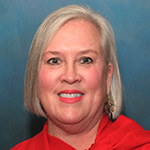Homelessness K-Count Moved to February 23
Kentucky’s recent frigid temperatures have spotlighted the many people in Kentucky who live unsheltered. Each year, the state conducts a Point in Time (PIT) count of sheltered and unsheltered people experiencing homelessness on a single night in January. Due to weather and COVID concerns this year, the count was postponed to February 23. Cities and individuals can help with the effort.
The U.S. Department of Housing and Urban Development (HUD) requires the count. HUD directs housing and homeless to Continuums of Care (CoC) to manage and distribute. In Kentucky, there are three CoCs - Louisville, Lexington, and the “Balance of State” CoC, which funds other homeless and housing programs throughout the state. The Kentucky Housing Corporation (KHC) administers the “Balance of State” CoC.
HUD requires the CoCs complete an annual count of the sheltered homeless and a count every other year for anyone that is unsheltered. In Kentucky, we conduct both the sheltered and unsheltered count annually. The count includes people living in emergency shelters, transitional housing, and hotels/motels paid for by a charitable organization. Also included are unsheltered individuals sleeping in places not meant for human habitation, such as outside, in a vehicle, in a blighted or abandoned building, or a tent. The thousands of individuals couch surfing, doubling up, or living at someone else’s residence are not included in this count.
Kentucky’s Balance of State is called the K-Count. It is a critical effort because its aims to demonstrate the housing services that each community needs for those experiencing homelessness. K-Count helps HUD determine how much federal funding will be awarded to each community for homeless programs and allows service providers and professionals to monitor trends and progress over time.
In 2020, the overall Kentucky PIT count identified 4,011 individuals living unsheltered, with 55% of them scattered throughout the BOS area — 25% in Louisville and 17% in Lexington.
The count that will take place on February 23 is a crucial step to identifying vulnerable people in our cities and communities. Lexington and Louisville have city offices to address homelessness and housing. In other communities, housing providers and community services providers work together to plan and organize the unsheltered K-Count efforts. Often city and county law enforcement and emergency management personnel are asked to help recruit other volunteers and map out locations such as encampments. Volunteers survey unsheltered individuals and can provide information on local resources. They often distribute care packages as well.
Typically in a community, it is service providers who organize the K-Count. On February 23, those participating in the local K-Count will meet at a specific place, review the survey, review COVID precautions, review the plan, and proceed. Volunteers go in small teams, including a social/community services professional and hopefully a law enforcement professional.
If you would like to participate in the K-Count, here is the information:
K-Count- Wednesday, February 23, 2022
Kentucky Housing Corporation is responsible for coordinating the K-Count in the Balance of State (all counties except for Fayette and Jefferson).
More general information about the K-Count can be found on the K-Count page of KHC’s website. Homeless Programs - K-Count and Housing Inventory Count
If you are interested in helping conduct the Unsheltered Count (this includes housing and service provider staff), please complete this form. 2022 K-Count - Unsheltered Count Assistance Sign-Up Survey
With questions, contact:
Kenzie Strubank, Manager - Homelessness Programs Kentucky Housing Corporation, 502-564-7630.
Cassie Carter, Housing Program Manager, Homeless and Housing Coalition of Kentucky, 502-223-1834, ext. 106.
For the count in Louisville, contact the Coalition for the Homeless.
For the count in Lexington, contact the Lexington Office of Homelessness Intervention and Prevention.


